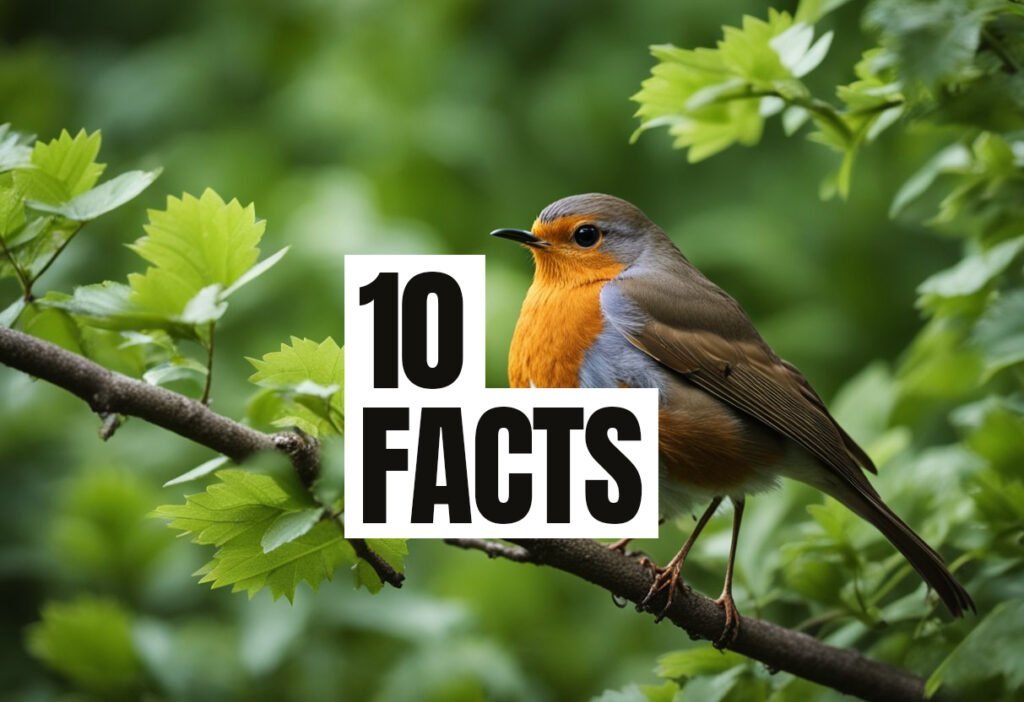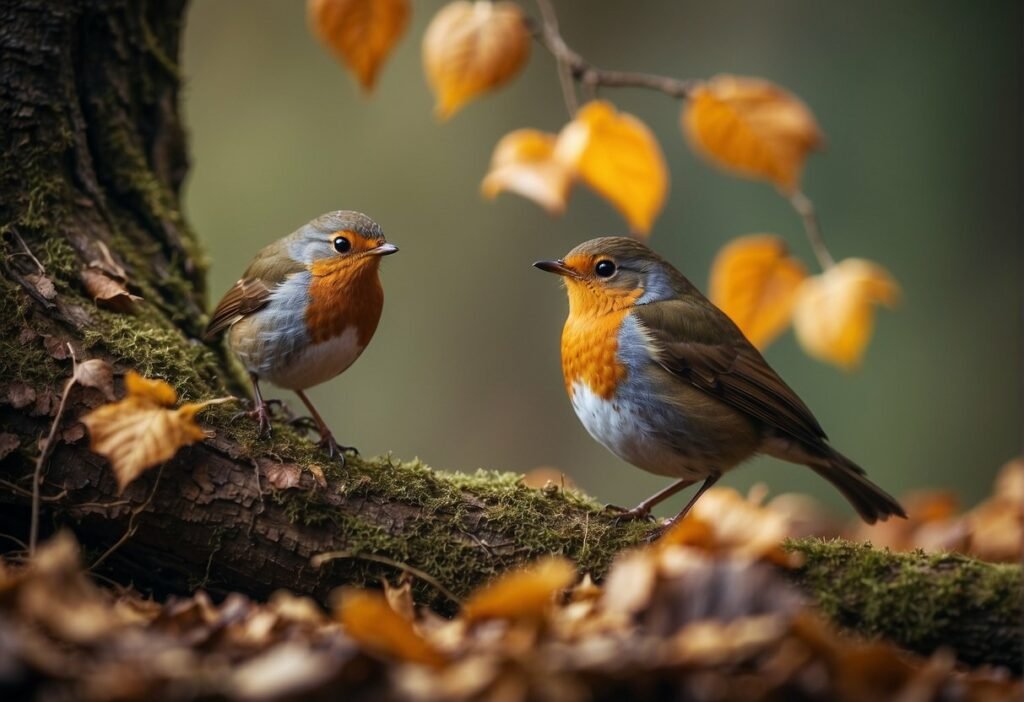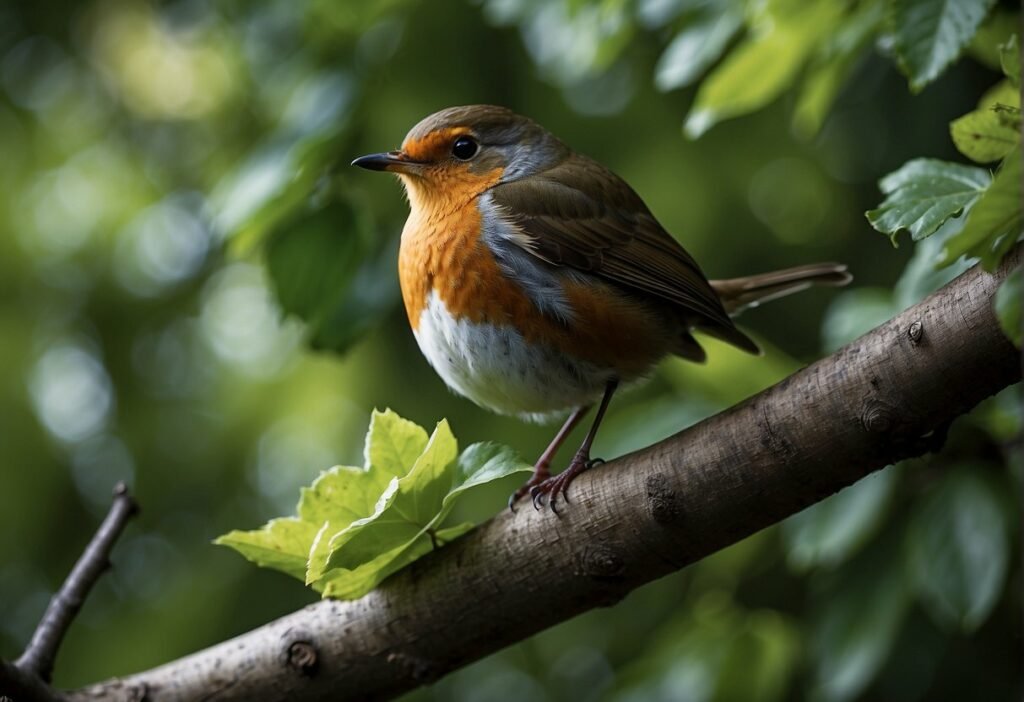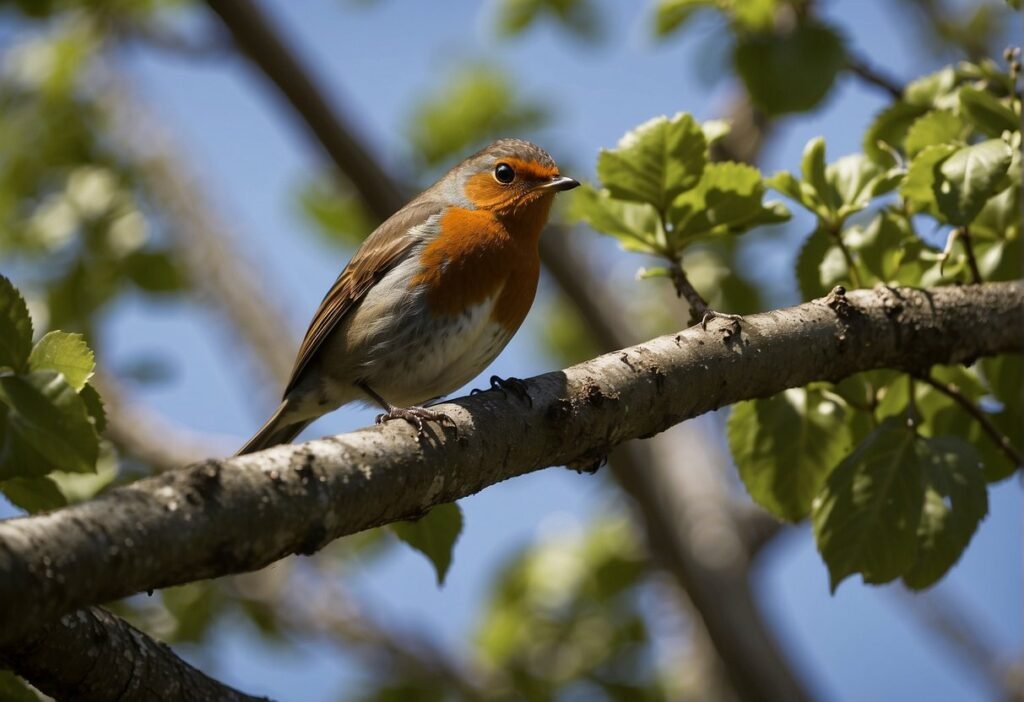Robins are a common sight in many gardens and parks, but have you ever wondered whether they have good eyesight? The answer is yes, robins do have excellent eyesight. In fact, their vision is one of their most important senses and plays a crucial role in their survival.

Birds, in general, have exceptional eyesight, and robins are no exception. Their eyes are large in proportion to their head, allowing them to see a wide range of their surroundings. They also have excellent color vision, which is important for identifying food sources and potential mates. Additionally, robins have the ability to see ultraviolet light, which is invisible to the human eye and can help them locate ripe fruit and identify other birds during mating season.
Robins’ Visual Capabilities
Robins are known for their distinctive red breast, but their visual capabilities are equally impressive. This section explores the anatomy of robins’ eyes, their eyesight in different conditions, and how their visual abilities compare to other birds.
Anatomy of Robins’ Eyes
The shape of robins’ eyes is similar to that of other birds, with a round, bulging shape that allows for a wide field of vision. Their eyes are relatively large for their body size, which enhances their visual acuity.
Robins have excellent color vision, which is important for identifying ripe fruit and other food sources. They have four types of color receptors in their eyes, which allows them to see a wider range of colors than humans can.
Eyesight in Different Conditions
Robins are diurnal, which means they are active during the day. Their eyesight is optimized for this environment, with a high level of visual acuity and binocular vision that allows them to accurately judge distance and track moving objects.
In low light conditions, robins’ eyes adjust to allow for better vision. They have a specialized layer of cells in their eyes that reflects light back onto the retina, which enhances their ability to see in dim light.
Comparison With Other Birds
Robins’ visual capabilities are impressive, but how do they compare to other birds? In terms of visual acuity, robins are on par with birds of prey like hawks and eagles. However, they have a wider field of vision than these birds, which is important for detecting predators and navigating their environment.
Compared to other songbirds, robins have larger eyes and better color vision. They also have a higher density of photoreceptor cells in their eyes, which enhances their visual acuity.
Overall, robins’ visual capabilities are well-suited to their diurnal lifestyle and help them navigate their environment with precision and accuracy.
Robins in Their Habitat
Robins are a common sight in North America. They belong to the thrush family and are known for their distinctive orange-red breast. These birds have adapted to a wide range of habitats, from woodlands to suburban gardens. In this section, we will explore how robins interact with their environment.
Foraging and Diet
Robins are omnivores, and their diet varies depending on the season. In spring and summer, they mainly feed on earthworms and insects. In fall and winter, they switch to berries and fruits. Robins are known for their ability to find earthworms by sight. They have good eyesight and can spot worms from a distance. They also use their sense of touch to locate prey.
Navigational Skills
Robins are migratory birds, and they use a magnetic compass to navigate. They can detect the Earth’s magnetic field and use it to orient themselves. This ability allows them to migrate long distances without getting lost. In addition to their magnetic compass, robins also use visual cues to navigate. They can recognize landmarks and use the position of the sun to determine direction.
Adaptations to Environments
Robins have adapted to a wide range of environments, from forests to urban areas. They build their nests in trees, shrubs, and even on man-made structures. Robins are also known for their ability to adapt to changing conditions. For example, they can adjust their diet depending on the availability of food. They are also able to tolerate a wide range of temperatures, from below freezing to over 100 degrees Fahrenheit.
In conclusion, robins are fascinating birds that have adapted to a wide range of habitats. Their good eyesight, navigational skills, and ability to adapt to changing conditions make them successful in many environments.
Frequently Asked Questions
How does a robin’s vision compare to human vision?
Robins have excellent eyesight and can see a wider range of colors than humans. However, their eyes are not as sharp as humans, and they have a lower visual acuity. Robins also have a wider field of view than humans, allowing them to see more of their surroundings without turning their heads.
What adaptations do robins have for seeing in low light conditions?
Robins have a larger pupil size than humans, which allows more light to enter their eyes, improving their vision in low light conditions. Additionally, they have a higher concentration of rod cells in their eyes, which are more sensitive to light than cone cells and help them see in dim light.
Can robins distinguish colors, and how does this affect their behavior?
Robins can distinguish a wide range of colors, including ultraviolet light, which is invisible to humans. This ability is crucial for their behavior, as it helps them identify ripe fruits and berries, locate insects, and recognize potential mates.
How does the eyesight of robins contribute to their hunting techniques?
Robins use their excellent eyesight to locate prey, including worms and insects, from a distance. They also use their vision to track the movement of their prey and adjust their flight path accordingly. Additionally, they have a keen sense of depth perception, which helps them judge the distance to their prey accurately.
Do robins use visual cues to recognize individual humans?
Robins can recognize individual humans based on visual cues such as clothing, body shape, and facial features. However, they are more likely to recognize humans who regularly provide food or interact with them in a friendly manner.
What are the limitations of a robin’s vision?
Robins have some limitations to their vision, including difficulty seeing in complete darkness and distinguishing fine details at a distance. Additionally, their eyesight can be affected by environmental factors such as fog or glare from the sun.




